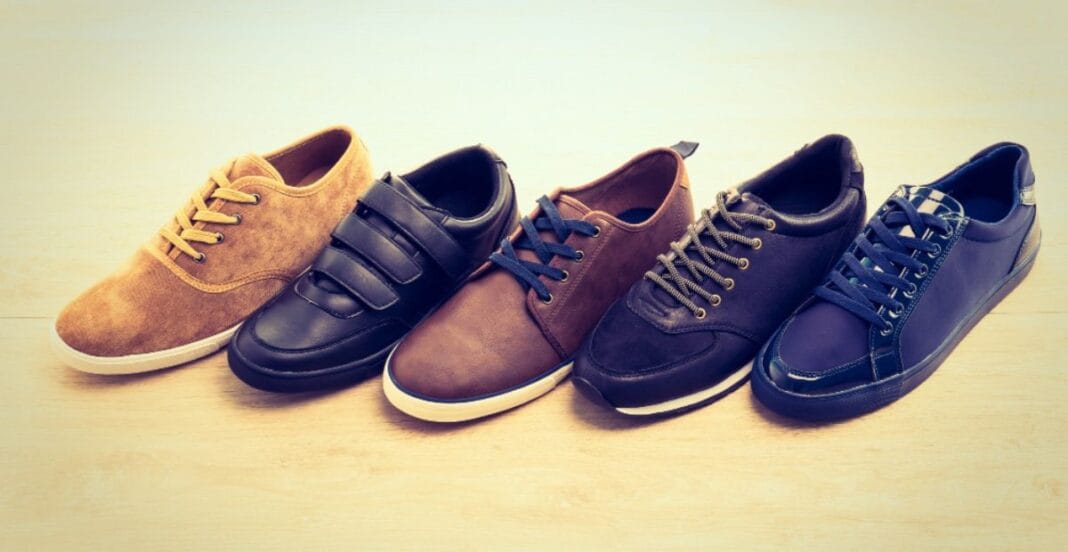Your favorite pair of shoes probably won’t last as long as you hope. Most people think shoes simply wear out from walking, but the truth is more complex. Hidden enemies are attacking your footwear every single day, breaking down materials faster than normal wear and tear ever could.
The good news? Regular cleaning can dramatically slow this aging process and help your shoes last years longer.
The Hidden Enemies Destroying Your Shoes
- Salt and Road Chemicals – Winter sidewalks are covered with salt and de-icing chemicals that eat away at leather, fabric, and rubber. These harsh substances don’t just disappear when you go indoors. They stick to your shoes and continue their destructive work, causing leather to crack, colors to fade, and stitching to weaken. Even in summer, road oils and urban pollutants create a similar effect.
- Moisture and Humidity – Water seems harmless, but it’s one of your shoes’ biggest enemies. When moisture gets trapped inside leather or fabric, it breaks down the fibers from within. This leads to cracking, stiffness, and that unpleasant musty smell. Even worse, damp conditions create the perfect environment for mold and bacteria to grow, which literally eat away at your shoe materials.
- UV Rays and Heat – Sunlight might seem innocent, but UV rays break down leather oils and fade colors just like they damage your skin. Heat from hot pavement or being left in a car makes materials brittle and causes glue to fail. This is why shoes left in direct sunlight often develop cracks and loose soles.
- Dirt and Abrasive Particles – That thin layer of dust on your shoes isn’t just cosmetic. Tiny particles of dirt, sand, and debris act like sandpaper against your shoe materials. Every step you take grinds these particles deeper into the surface, wearing away protective finishes and creating microscopic damage that grows over time.
How These Enemies Speed Up Aging
Think of your shoes like a car. Just as a car needs regular maintenance to prevent rust and engine problems, shoes need care to prevent material breakdown. When you ignore cleaning, these harmful substances accumulate and multiply their damage.
We took the discussion to Jamal from 5asec, a dry cleaning and footwear service provider in Dubai. He shared some prominent details that are the main cause of shoe damage and how it can impact your investment.
Salt crystals, for example, are hygroscopic, meaning they pull moisture from the air. This creates a cycle where your shoes stay damp longer, accelerating the breakdown process. Dirt mixed with moisture creates an acidic paste that eats through leather treatments and protective coatings.
The combination effect is the real killer. Dirty shoes that get wet and then dry in the sun experience the worst possible aging conditions all at once. This is why a single muddy hike followed by poor drying can cause more damage than months of normal wear.
The Science Behind Cleaning
- Cleaning Removes Harmful Residue – Regular cleaning physically removes the salt, dirt, and chemicals before they can cause permanent damage. Think of it as giving your shoes a fresh start every time. Clean shoes can handle moisture and heat much better than dirty ones because there are no harmful substances to amplify the damage.
- Cleaning Maintains Protective Barriers – Most shoes come with built-in protection like waterproof coatings or leather treatments. Dirt and grime break down these barriers, leaving the raw materials exposed. Proper cleaning followed by conditioning restores and maintains these protective layers.
- Cleaning Prevents Bacterial Growth – Clean, dry shoes don’t provide the environment bacteria and mold need to survive. This prevents the biological breakdown of materials and keeps your shoes smelling fresh. Regular cleaning also removes the organic matter that feeds these destructive microorganisms.
Simple Daily Habits That Add Years to Your Shoes
- Quick Daily Wipe-Down – Spend 30 seconds wiping your shoes with a damp cloth when you get home. This removes surface dirt and salt before it can settle in. For leather shoes, use a slightly damp cloth followed by a dry one.
- Proper Drying Technique – Never put wet shoes near direct heat or in the sun. Instead, stuff them with newspaper or paper towels and let them air dry at room temperature. Replace the paper every few hours to speed up the process.
- Weekly Deep Clean – Once a week, clean your shoes thoroughly with appropriate cleaners. Use leather cleaner for leather shoes, fabric cleaner for canvas, and specialized cleaners for synthetic materials. Follow up with conditioning treatments to restore flexibility and water resistance.
- Rotate Your Shoes – Don’t wear the same pair every day. Shoes need time to fully dry and recover their shape. Having at least two pairs you can rotate prevents the constant moisture and stress that accelerates aging.
The Bottom Line
Your shoes are under constant attack from invisible enemies that cause more damage than walking ever could. Regular cleaning isn’t just about appearance; it’s about removing harmful substances and maintaining protective barriers that keep your shoes healthy.
By spending just a few minutes each day on basic shoe care, you can easily double or triple the life of your footwear. Clean shoes don’t just look better; they perform better and last significantly longer than neglected ones.


